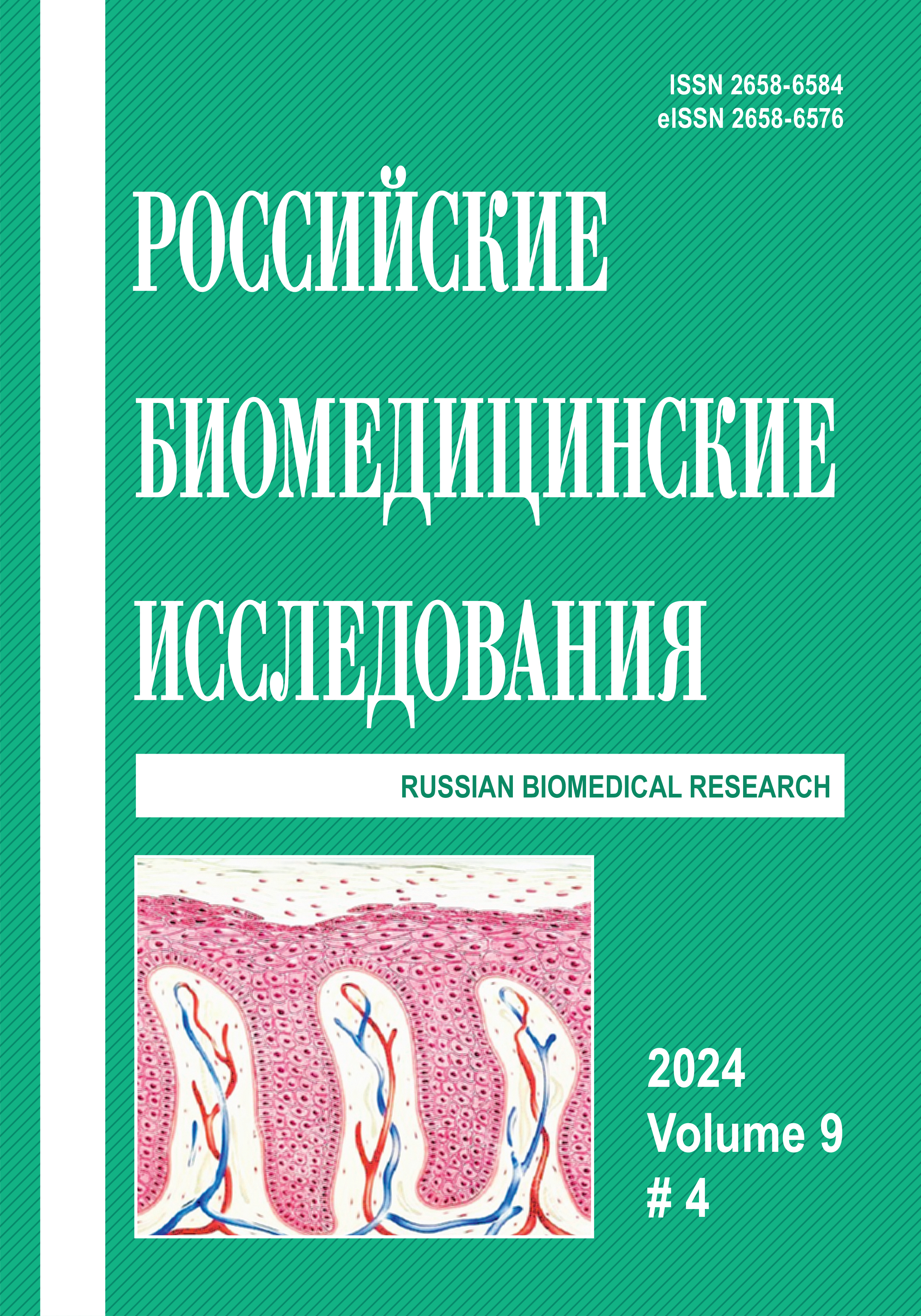ELECTROMYOGRAPHIC SIGNS OF AMBIDEXTRIA DEVELOPMENT PROGRESS
Abstract
Introduction. The relevance of the work is due to the need to develop ambidexterity as a manual skill of future surgeons in order to speed up the performance of operations and minimize trauma to the specialist, as well as reduce the risk of blood-borne infections. Ambidexterity can be developed by performing special exercises at home, and an objective assessment of changes in the state of the neuromuscular apparatus can be carried out using surface electromyography. The aim of the study is to develop an effective version of exercises for the development of fine motor skills using EMG assessment of the dynamics of the functional state of the motor units of the muscles of the forearms of the non-dominant hand. Materials and methods. The ten-day experiment involved 10 people aged 18–23 years, who were evenly divided into two groups, which once a day performed exercises to develop fine motor skills of the fingers, and the second group additionally performed exercises to develop interhemispheric connections. EMG registration was carried out by electromyograph Biopac Student LAB Basic Systems. The reliability of differences in dependent samples was determined using the nonparametric Mann–Whitney criterion; for dependent samples, the Wilcoxon criterion was used. Results. Performing fine motor skills training in combination with exercises that activate the work of both hemispheres of the brain more effectively contributes to the development of motor skills of the non-working hand. The formation of interhemispheric interactions increases the number of involved motor units and the degree of their synchronization. Conclusion. The development of interhemispheric connections allows for more effective mastery of manipulations with the non-working hand due to the involvement of a larger number of motor units in the process of muscle contraction.
References
Григорьев Н.Н., Кононенко К.В., Охотников О.И., Григорьев С.Н., В кн.: Сборник материалов Республиканской научно-практической конференции с международным участием «Медицинское образование XXI века: компетентностный подход и его реализация в системе непрерывного медицинского и фармацевтического образования». Витебск; 2017;367–371.
Кабанов А.А. Разработка системы классификации жестов руки на основе сигналов электромиографии. Омский научный вестник. 2021;3(177):79–84. DOI: 10.25206/1813-8225-2021-177-79-84.
Попадюха Ю.А. Применение роботизированного комплекса «Amadeo» для восстановления и развития мелкой моторики кисти у больных ортопедотравматологического и неврологического профиля. Современные здоровьесберегающие технологии. 2017;1:149–161.
Никишина В.Б. Формирование амбидекстрии у леворуких детей младшего школьного возраста как фактор успешности обучения. В кн.: Материалы международной юбилейной конференции к 120-летию со дня рождения Б.М. Теплова «Б.М. Теплов и современное состояние дифференциальной психологии и дифференциальной психофизиологии». М.; 2017:358–360.
Медведева М.А. Щиголева Е.В. Отработка мануальных навыков будущих хирургов в условиях учебной операционной как этап профилактики заражения гемоконтактными инфекциями. Вестник Совета молодых ученых и специалистов Челябинской области. 2018;2(4(23)):29–33.
Мартынова Н.А., Кузьмин А.Г., Аликберова М.Н., Лозовицкий Д.В. Медицинские тренажеры как базис для отработки хирургических навыков. Здоровье и образование в XXI веке. 2018;20(1):108–113.
Шипигузова С.А., Пешиков О. Развитие амбидекстрии среди студентов медицинского вуза. В кн.: Сборник проектов конкурса «Всероссийская научная школа “Медицина молодая”»: Международный фонд развития биомедицинских технологий им. В.П. Филатова. М.; 2023: 1056–1062.
Ланская Е.В., Ланская О.В. Биоэлектрическая активность мышц при выполнении спортивных движений, специфичных для пауэрлифтинга, баскетбола и легкоатлетического бега. Тенденции развития науки и образования. 2016;12(1):40–45. DOI: 10.18411/lj2016-3-20.
Rukina N.N., Kuznetsov A.N., Borzikov V.V., Komkova O.V., Belova A.N. Surface electromyography: its role and potential in the development of exoskeleton (review). Sovremennye tehnologii v medicine. 2016;8(2):109–118. DOI: 10.17691/ stm2016.8.2.15.
Maitland S., Hall J., McNeill A., Stenberg B., Schofield I., Whittaker R. Ultrasound-guided motor unit scanning electromyography. Muscle Nerve. 2022;66(6):730–735. DOI: 10.1002/mus.27720.
Чернякевич О.М., Калюжин В.Г. Коррекционно-развивающая программа развития мелкой моторики после ишемического инсульта. Наука — образованию, производству, экономике. В кн.: Материалы ХХ (67) Региональной научно-практической конференции преподавателей, научных сотрудников и аспирантов: в 2 т. Т. 1. Витебск; 2015:384–385.
Анисимова Н.В. Оценка функциональной асимметрии с использованием разных методических подходов. Международный научно-исследовательский журнал. 2020;7:70–73.
Carson R.G. Neural pathways mediating bilateral interactions between the upper limbs. Brain Res Brain Res Rev. 2005;49(3):641–662. DOI: 10.1016/j.brainresrev.2005.03.005.
Grefkes C., Eickhoff S.B., Nowak D.A., Dafotakis M., Fink G.R. Dynamic intra- and interhemispheric interactions during unilateral and bilateral hand movements assessed with fMRI and DCM. Neuroimage. 2008;41(4):1382–1394. DOI: 10.1016/j.neuroimage.2008.03.048.
Allison G.T., Fujiwara T. The relationship between EMG median frequency and low frequency band amplitude changes at different levels of muscle capacity Clin Biomech. 2002;17(6):464–469. DOI: 10.1016/s0268-0033(02)00033-5.
Habich M., Pawlinski B., Lorenc K., Sady M., Siewruk K., Zielenkiewicz P., Gajewski Z., Poznanski J., Paczek L., Szczesny P. The relationship between EMG high frequency and low frequency band amplitude changes correlates with tissue inorganic phosphate levels. Acta Biochim Pol. 2023;70(4):951–954. DOI: 10.18388/abp.2020_6893.
Copyright (c) 2024 Russian Biomedical Research

This work is licensed under a Creative Commons Attribution 4.0 International License.



